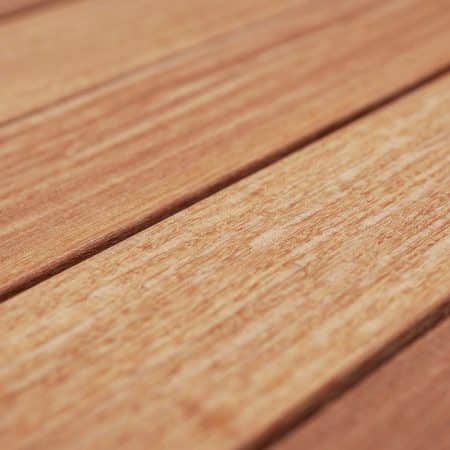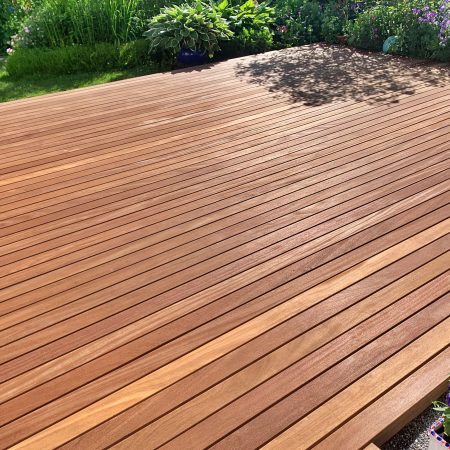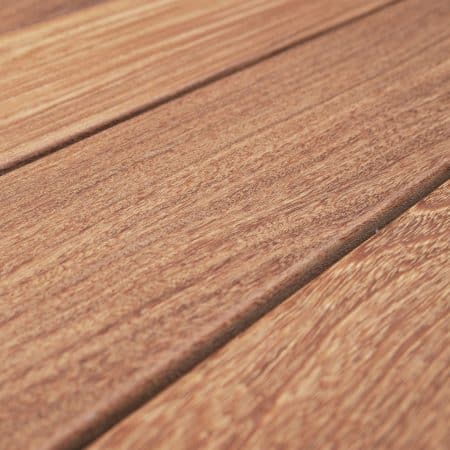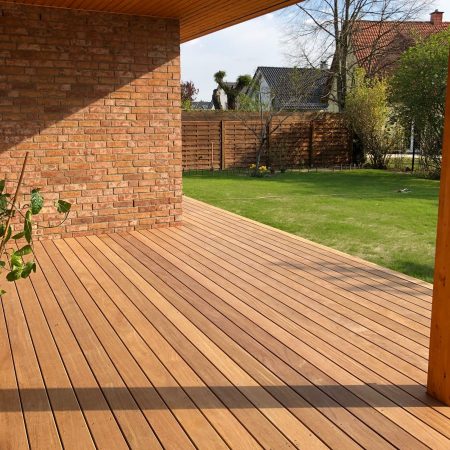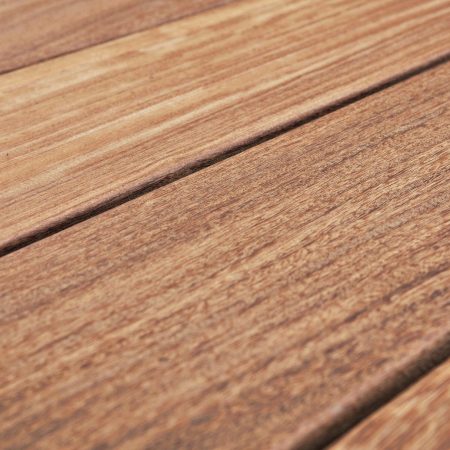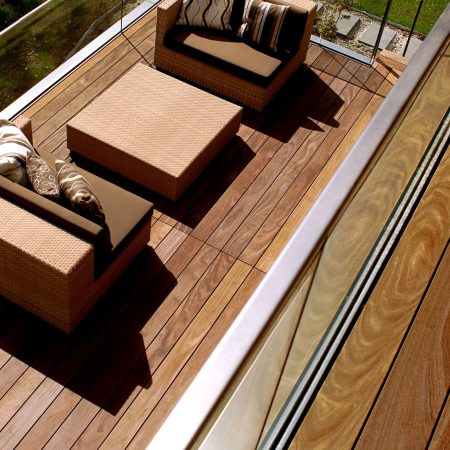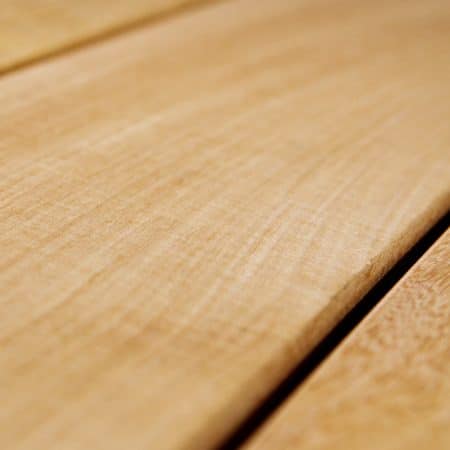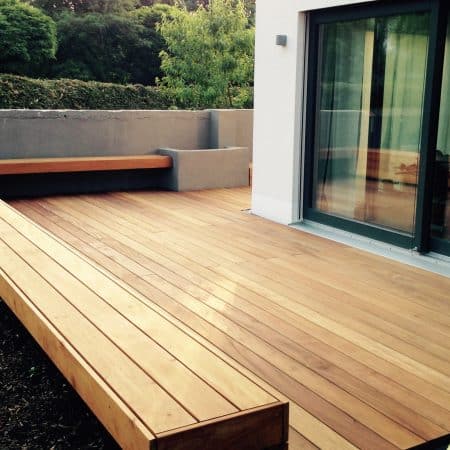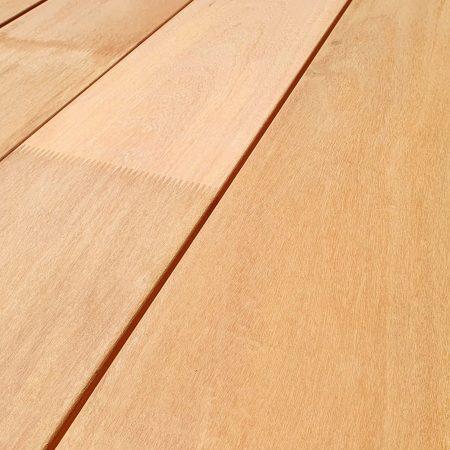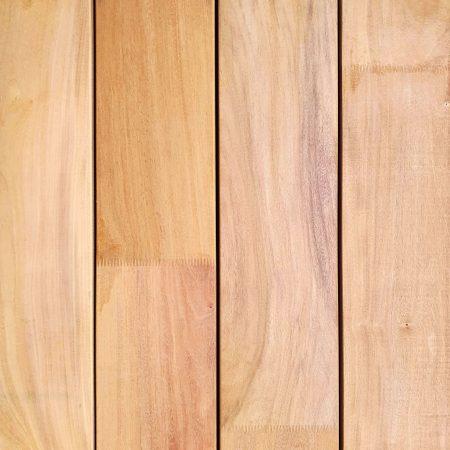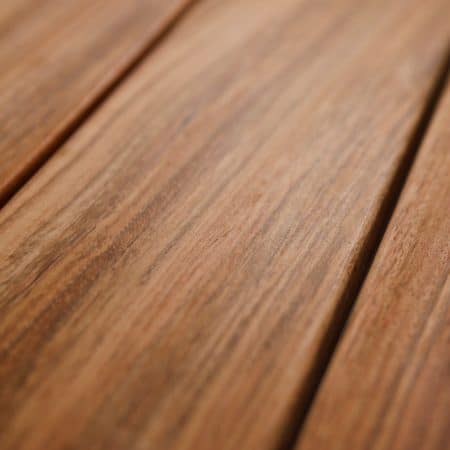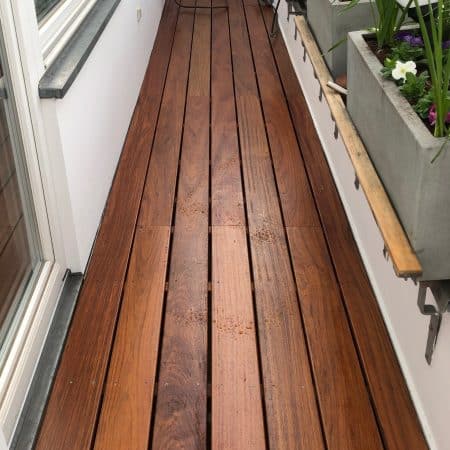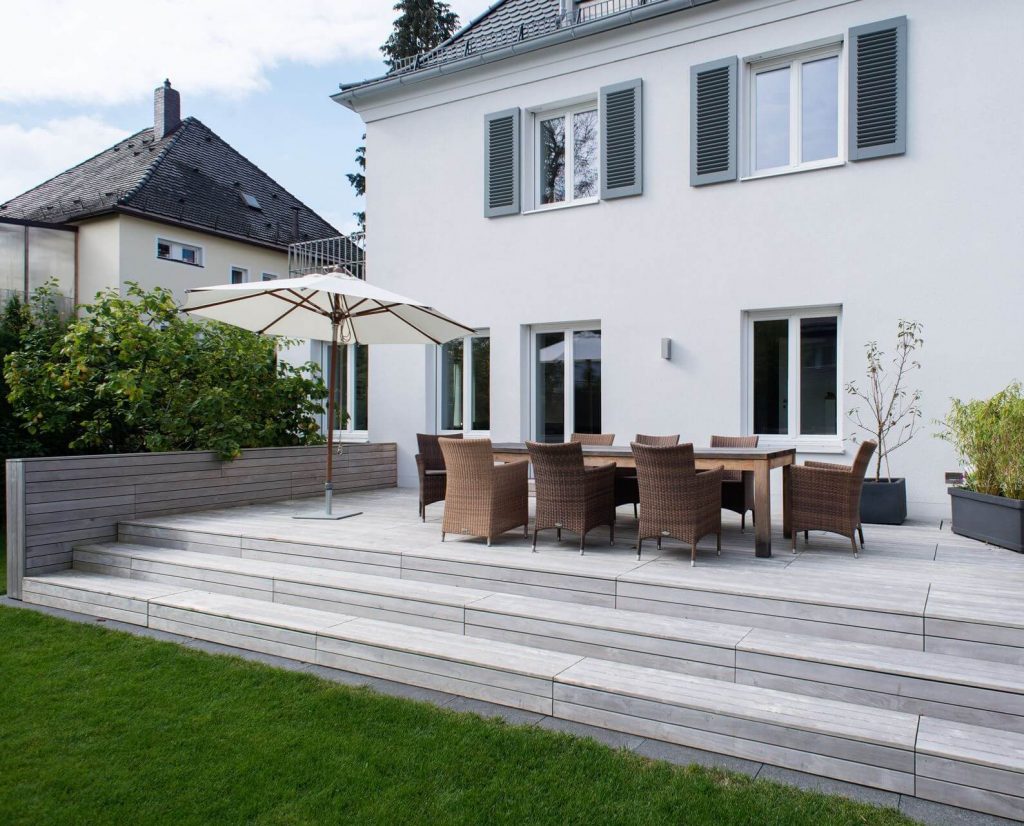
CONSULTATION » Decking boards » Durability
Durability of a wooden deck
Fungi and mold will degrade wood over time. The durability classes or resistance classes according to the DIN standard indicate the resistance of different types of wood to fungal attack. Tropical woods usually have a significantly higher durability outdoors than European woods.
The resistance class provides an overview
While a wood in resistance class 1, such as Cumaru, has a service life of more than 25 years according to the DIN standard, wood with a low resistance, such as Douglas fir, can be attacked by fungi after just five years. All decking wood Betterwood achieve the highest resistance class. You can find an overview of the resistance class of the best-known decking wood in our Wood Lexicon.
Kiefer
Douglas
larch
Bangkirai
jatoba
garapa
Teak
Cumaru
The constructive wood protection
In addition to the natural durability of a wood, other external factors determine the durability of the wood. The DIN standard must therefore only be understood as a guide and not as a guarantee. The durability is influenced, among other things, by the ambient humidity and the constructive wood protection. In shady places where the wood is exposed to constant moisture, its durability is reduced compared to a sunny, rather dry environment. In addition, the terrace should be well ventilated and the wood should not be constantly submerged in water. A terrace with a slight incline achieves a longer service life.
Wood care for a longer service life
In addition, the durability of a wooden terrace with wood care products be extended. Impregnation protects against rot, blue stain and algae. Decking oil and front edge wax prevent cracking. And annual cleaning removes algae and leaves.
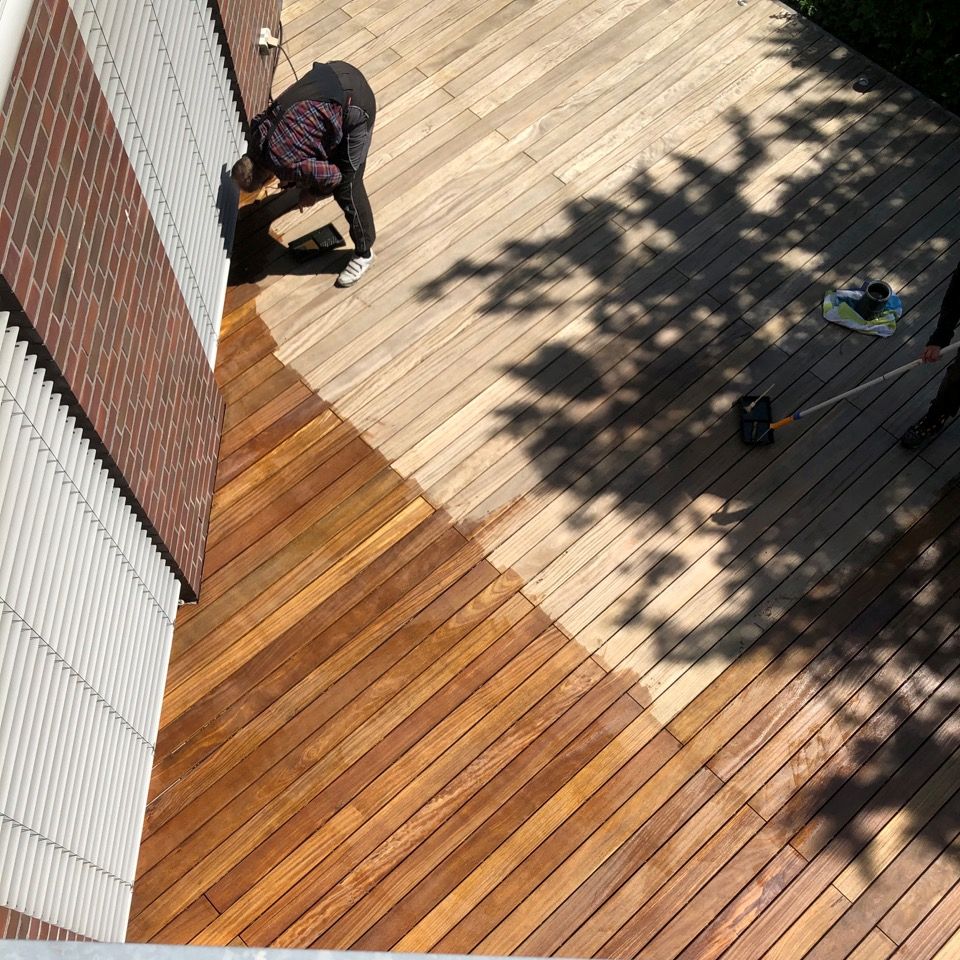
Table of Contents
process
calculate demand
calculate costs
Order wood samples
Wood decking shipping
interim storage
Building instructions wooden terrace
grocery list
Prepare the subsurface
meadow or earth
stone or concrete
roof or balcony
hillside
Lay out the foundation
Establish height compensation
Lay the substructure
Install decking
Select saw blade
Screw the decking boards together
Building instructions terrace screws
Assembly instruction clips
Fade wooden terrace
build stairs
Decking boards crooked
Typical mistakes
Care for
Clean
Enjoy
Decking quality
Best decking wood
Wood species comparison
hand sorting
cracks and curvature
Durability wooden deck
Wood vs Aluminum
Concealed screw connection comparison
branded products
finger joint
Our decking boards
ab 6,21 €
Cumaru decking, FSC 100%
Price from: €70 per m2, resistance class: 1
Advantages: ✓ best durability ✓ particularly robust and scratch-resistant
Disadvantages: ✗ partly rough surface ✗ high power development
Tip: Sand the floorboards after they have been exposed to the weather for the first time.
ab 8,89 €
Cumaru decking, FSC 100%
Price from: €70 per m2, resistance class: 1
Advantages: ✓ best durability ✓ particularly robust and scratch-resistant
Disadvantages: ✗ partly rough surface ✗ high power development
Tip: Sand the floorboards after they have been exposed to the weather for the first time.
ab 11,69 €
Cumaru decking, FSC 100%
Price from: €70 per m2, resistance class: 1
Advantages: ✓ best durability ✓ particularly robust and scratch-resistant
Disadvantages: ✗ partly rough surface ✗ high power development
Tip: Sand the floorboards after they have been exposed to the weather for the first time.
ab 9,26 €
Garapa decking boards, FSC 100%
Price from: €65 per m2, resistance class: 1-2
Advantages: ✓ smooth surface ✓ homogeneous, light color
Disadvantages: ✗ Substances containing iron lead to discoloration ✗ Unscrewed tends to warp
Tip: Patio cleaning removes discoloration and
Professional interim storage avoids delay.
ab 9,97 €
Garapa decking boards, FSC 100%
Price from: €65 per m2, resistance class: 1-2
Advantages: ✓ smooth surface ✓ homogeneous, light color
Disadvantages: ✗ Substances containing iron lead to discoloration ✗ Unscrewed tends to warp
Tip: Patio cleaning removes discoloration and
Professional interim storage avoids delay.
ab 9,26 €
Jatoba decking, FSC 100%
Price from: €65 per m2, resistance class: 1-2
Advantages: ✓ smooth surface ✓ strong color and grain
Disadvantages:✗ unoiled tendency to crack ✗ colored ingredients wash out
Tip: Clean and oil decking boards after installation.




